It is a long time since I put pen to paper on this blog, but I do have an excuse – I was away on the first cruise we have taken since the pandemic started back in 2020. Kudos to Viking Cruises for taking great care of us – cruise ships are notorious for being a hotbed of virus contagion, but with daily covid tests for all guests and crew and mandatory isolation for those unlucky enough to test positive, they seemed to keep the case count down to around 10 passengers or so. We have been wanting to cruise along the Alaskan coast for some time and this trip didn’t disappoint. I will be posting more stories from Alaska in coming weeks, but as I am still working my way through almost 2000 images, I decided to talk about photographing sunsets in this article. I have created a gallery of my Alaska images on my online store, so if you are interested in prints, please check out this gallery.
After visiting the Hubbard Glacier in the early afternoon (on an unfortunately cloudy and misty day), we sailed out into the ocean leaving the coast behind in the mist. This image gives you some idea of the mysterious look of the Alaskan mountains as we sailed further out:
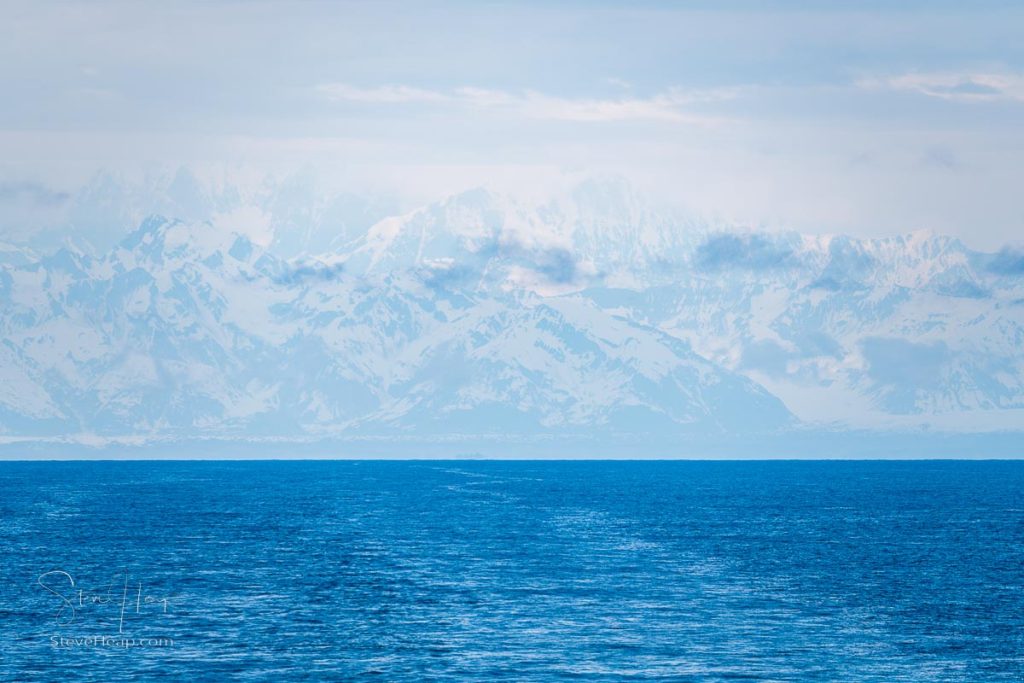
The evolving weather
As the day progressed, the skies became clearer, and the sun finally made its appearance around 6pm or so. From that point through to the end of the sunset that evening, I took maybe 200 images as I tried to capture the changing clouds and colors developing off the back of the ship. I checked on a map to try to work out where this is – from the starting point and the destination, I’m pretty sure that this is Glacier Bay National Park on our way to Skagway.
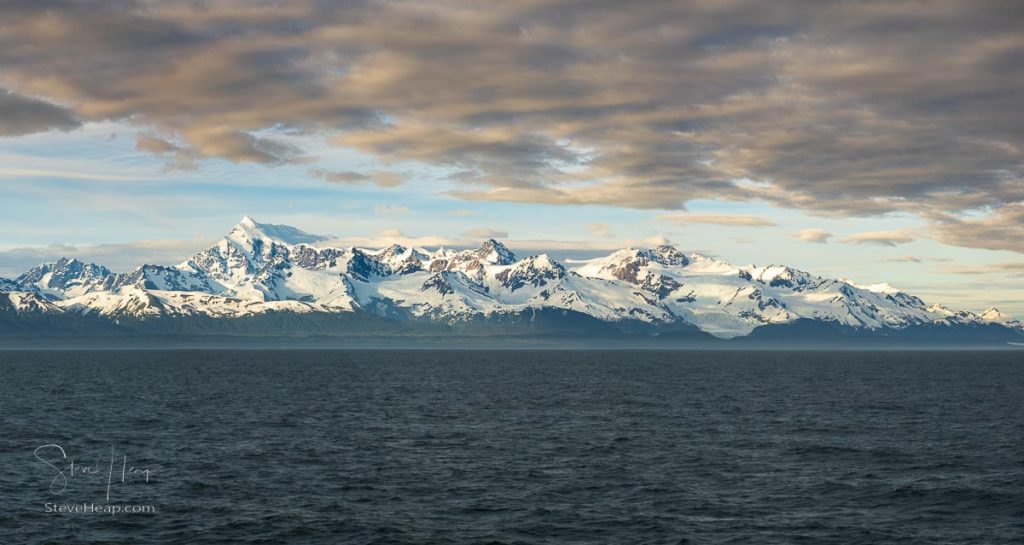
We like to book a cabin on the back of the boat so that we can sit and watch the places we have visited disappear into the distance and this choice made it perfect for watching this developing sunset. With a tripod on our balcony, I was set to hopefully create my own masterpiece! The weather was unusually warm, and I’m sure you don’t want to imagine this, it was warm enough to stand there in my underwear…
Multiple images merged into one picture
Why so many images, you may wonder? For a couple of reasons – in the early evening, I wanted to create some high-definition panoramas and so I would turn my camera on its side and take perhaps 10 shots as I panned across the scene. Each picture overlapped the previous one so that the software can match the details and stitch them all together into one large image, that could be printed up to 10 feet wide if I could afford it!
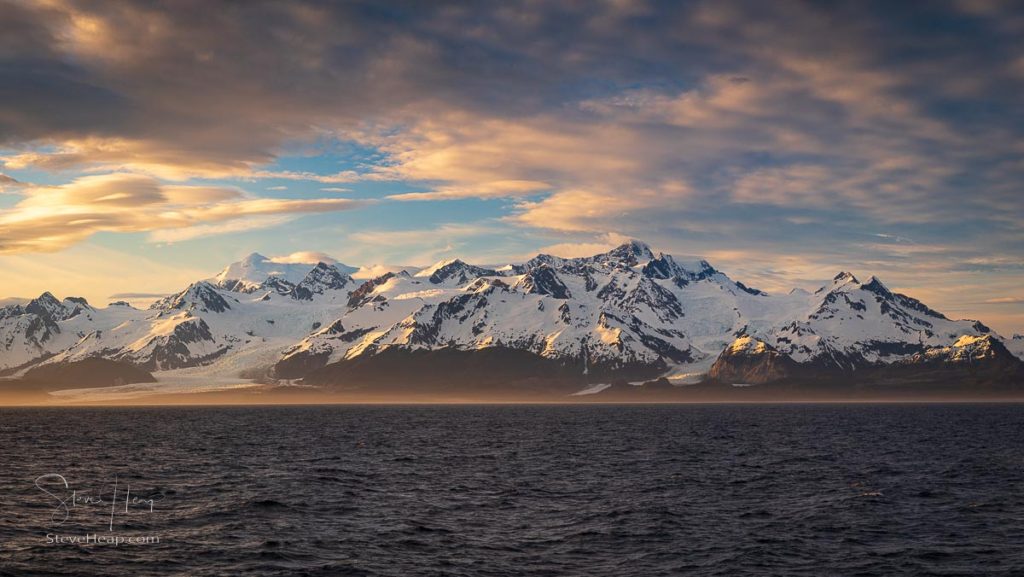
For the later shots of the sunset, the camera struggles to capture the brightness of the sun in the image and the details in the shadows of the mountains. Our eyes are remarkable at enhancing the detail in any scene in front of us, but the camera needs that help by taking 5 shots one after other with increasing exposures. So, in one of the images, the sun is properly exposed, in others, the details of the mountains will be visible. Software can then balance all five together to give a scene that is closer to what the eye would have seen.
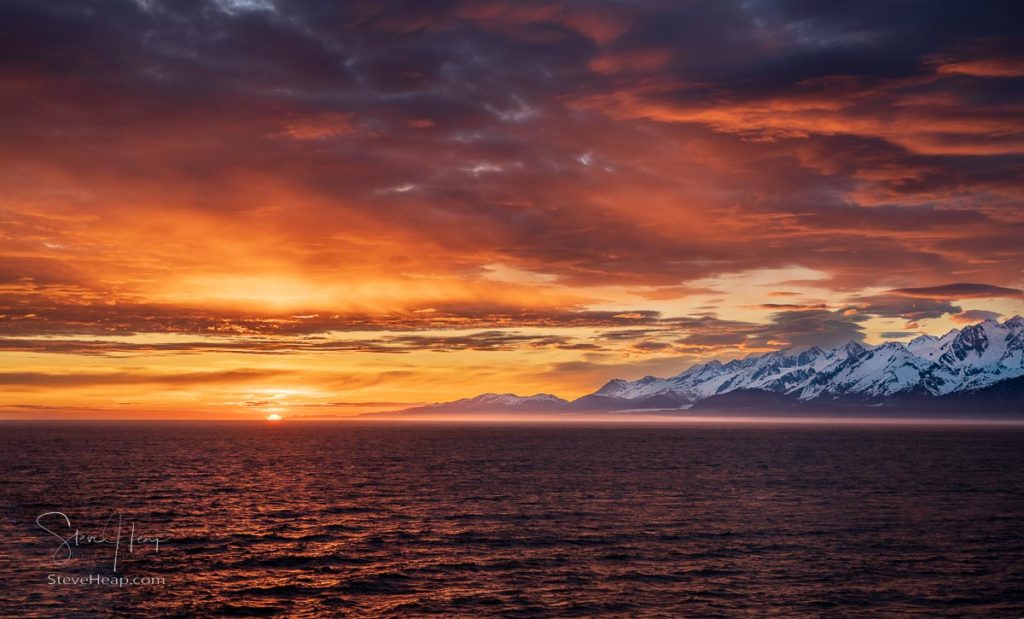
The Camera never lies…
This is perhaps the place to say that the camera never actually lies because it doesn’t have a clue what a scene should actually look like. Unlike a film camera that showed the colors that the film designer had built into the emulsion on the film, the camera produces an endless set of numbers that represent the brightness of each small section of its sensor. Some of the spots represent, red shades, others green and blue. In a phone or a simple camera, the processor in the camera decides what to make of those numbers. Professional cameras more often rely on software back on the computer to work this out. So, in processing these images, I am trying to recall what I saw at the time and how I felt about the scene developing in front of me. Should it have been a little less colorful, a little redder rather than orange? All those are choices made in completing the final version of the image. It is true that one individual photo would not show detail in the bright parts of the sky and details on the mountains, but our eyes would have seen that, and so that is what I am trying to show. A little like a painter would not just paint a black shape for the mountains – they would paint details in them, because they would be able to see that.
This leads me to perhaps my favorite image of the evening. Now around 9:47pm, the sun was still above the horizon and its rays were hitting the tops of the peaks covered in snow, giving some gorgeous light playing out in front of me:
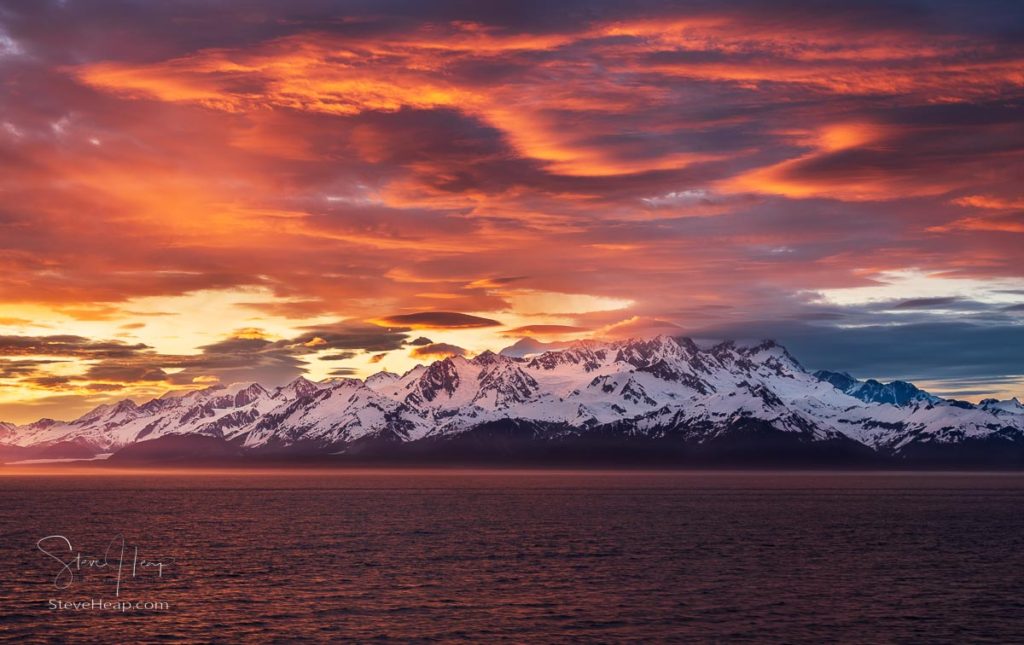
I then took a wider view of the scene to include the wake of the cruise ship:
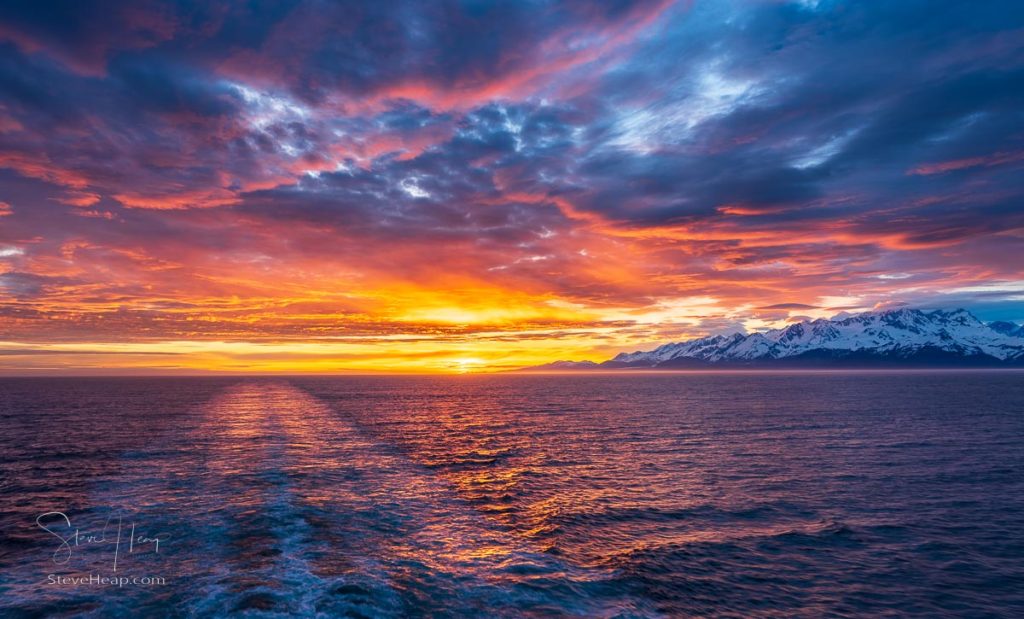
Just five minutes later, the sun was below the horizon and the action shifted to the clouds themselves. No direct light on the mountains now and just reflected light from the sky:
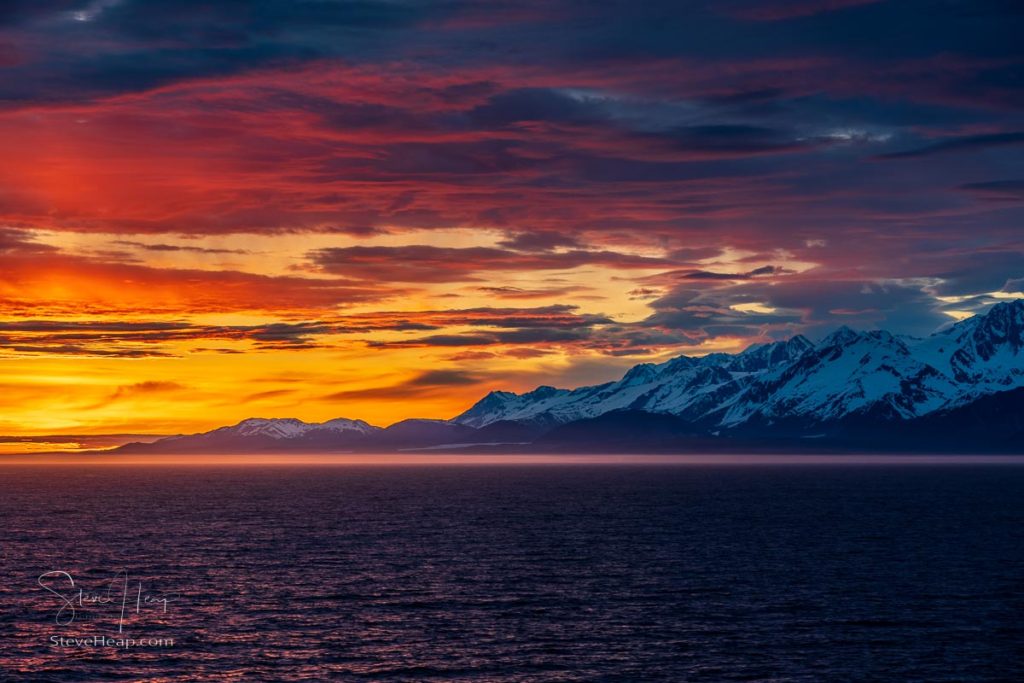
Finally, at 10pm, most of the action was complete and this was my final image of the night:
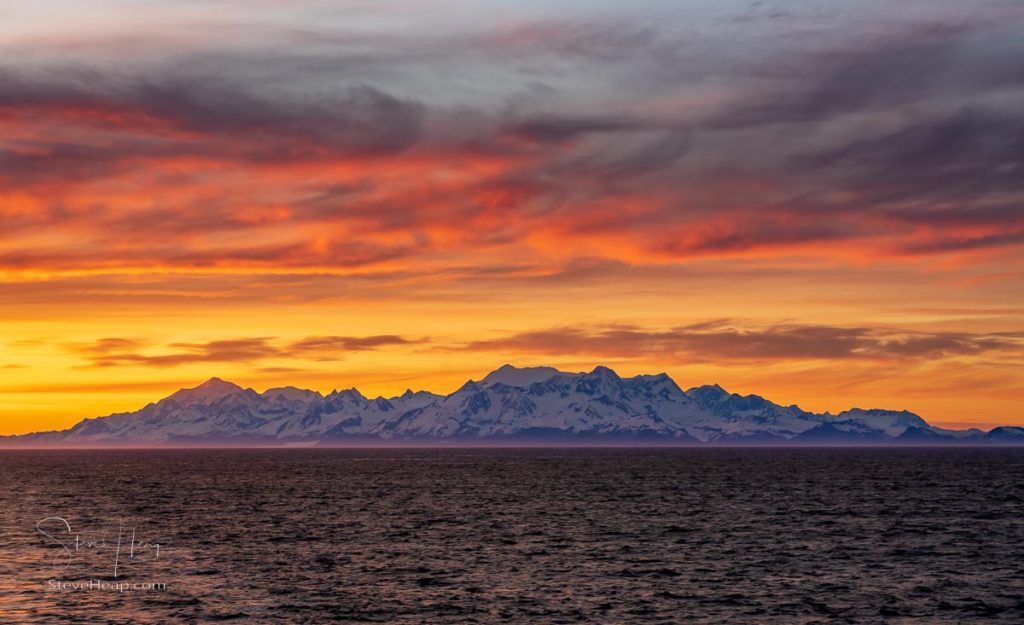
Time to put the camera on charge ready for another day! The next story in this adventure on the Viking Orion in Alaska is in the small and interesting town of Skagway with its history in the Gold Rush.
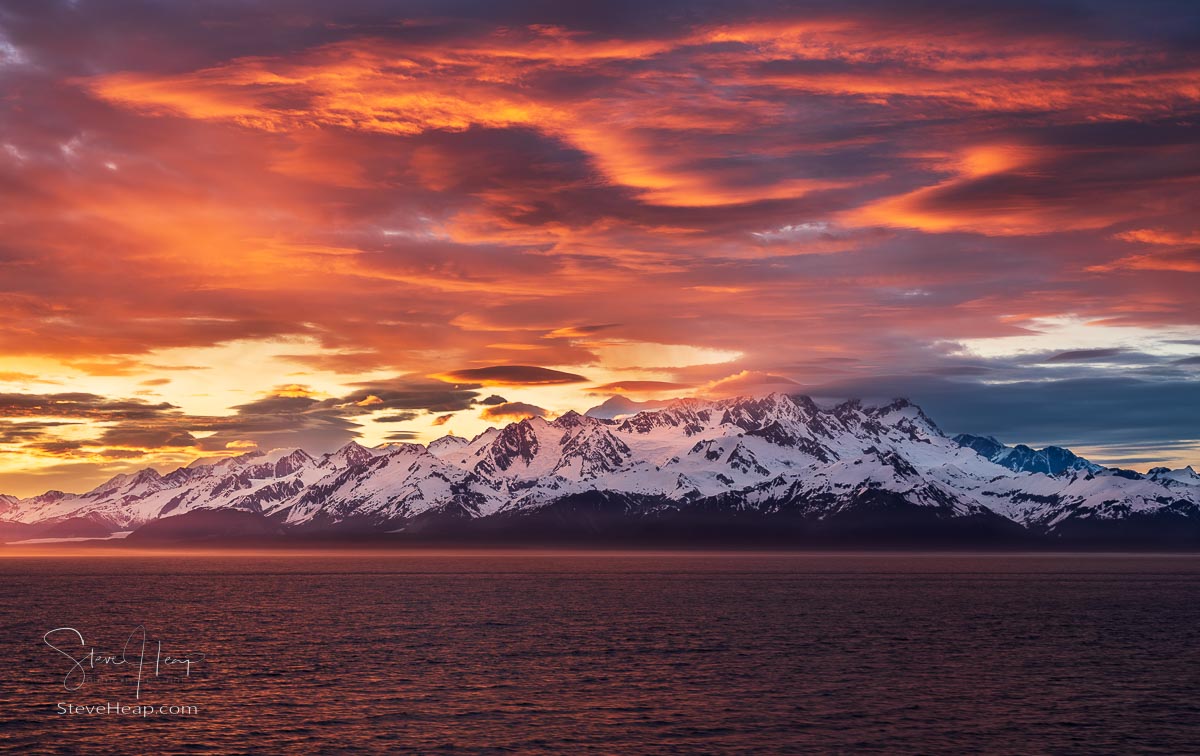
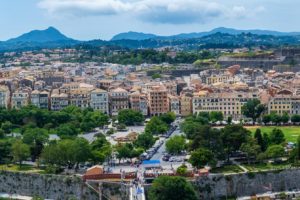
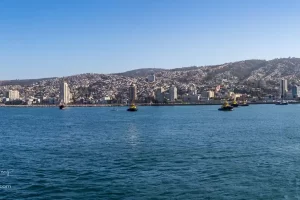
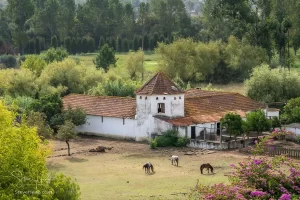
jim hughes
20 Jun 2022Steve – wow. Just wow. Yes they’re “just” mountains and sunsets, but they’re not ordinary. Beautifully processed, and the wide format is perfect. And they’re not over-baked, they feel real. I’d be very proud of this work, if it were mine.
Steve Heap
20 Jun 2022Thanks Jim – the drama in the sky certainly helped, but I was very pleased with how these turned out. On a ship you can’t change your position to get a different composition, and so that played into the success as well!
Bill Swartwout
20 Jun 2022Wow, Steven, you outdid yourself – not only with these images but your detailed narrative of what you did/how you did it. My initial favorite is the mountains in the mist with which you opened this article. There is just something ethereal about it. Your sun “kissing” the horizon is outstanding but I think the real “crowd pleaser” should be the last one, where you captured an entire mountain. BRAVO!
Steve Heap
20 Jun 2022Thanks Bill! Yes, I also liked that “mountains in the mist” image. It could have had loads of dehaze applied to it, but that would spoil the feeling in the image. Very kind comments!
Louis Dallara Fine Art Photography
20 Jun 2022Amazing sunsets, I like all of them. Loved the backstory, it adds some much to the images.
Steve Heap
20 Jun 2022Thanks Louis! I was writing this story as I waited for Lightroom to process the next HDR shot – making use of each second of time, which I need to do with so many images to look at!
Bob Decker
26 Jun 2022Nice story and stunning photography. Great work Steve!
Steve Heap
26 Jun 2022Thanks Bob!